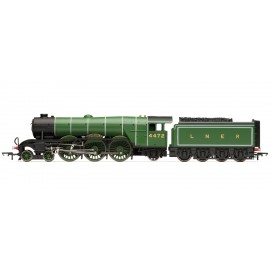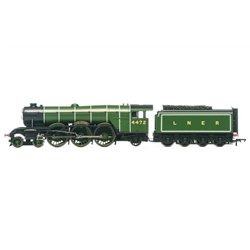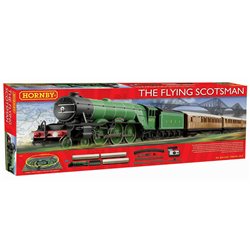Static grass puffer bottles work by manually charging model grass fibres with static electricity. When the charged...
No products
Product successfully added to your shopping cart
There are 0 items in your cart. There is 1 item in your cart.
Search Tips
What type of train is the Flying Scotsman?
Think Flying Scotsman, and you undoubtedly think of the locomotive, however, the name comes from not just a single engine, but a whole train, a daily service between London and Edinburgh.
Trains have been transporting passengers between the English and Scottish capitals since the 1860s. Back then it was the duty of three railway companies to operate what we now call the East Coast Mainline, these were, the North British Railway, North Eastern Railway and the Great Northern Railway. Between them, the three companies jointly operated the East Coast Joint Stock (ECJS) for through services from London to Edinburgh, the most prestigious of these through trains being the 10 o'clock service from London and the 10 o'clock service from Edinburgh, these departures included additional luxury and were named the Special Scotch Express, the journey took 10 1/2 hours and in the 1870s the service was unofficially nicknamed the Flying Scotsman.
In 1923 the railways were grouped, and a year later the Special Scotch Express now operated by LNER officially adopted its Flying Scotsman nickname. To promote the service further a new Gresley A1 Pacific was also named The Flying Scotsman, the locomotive that we all know and love today!
Further improvements were made to the service in 1928 when advances in valve gear technology meant that engines now used less coal, the LNER took advantage of this and introduced a non-stop service between London and Edinburgh with a reduced journey time of 7 hours and 30 minutes. To facilitate locomotive crew changes, a corridor was fitted to the tenders of ten locomotives that operated the route and The Flying Scotsman locomotive became the first engine to pull the non-stop service on 1st May 1928.
The locomotive went on to have many adventures in preservation and has quite a story to tell. Now fully restored it appears now and then to please the crowds at special events, the train however, still beats the tracks from capital to capital, and it still has a few claims to fame too. The service now operated by Azuma units takes a mere 4 hours to complete its journey and is the only scheduled service not to call at Darlington or York stations. Sorry, Darlington and York!
Click here to receive the tips weekly in your mailbox. You can unsubscribe at any time.










